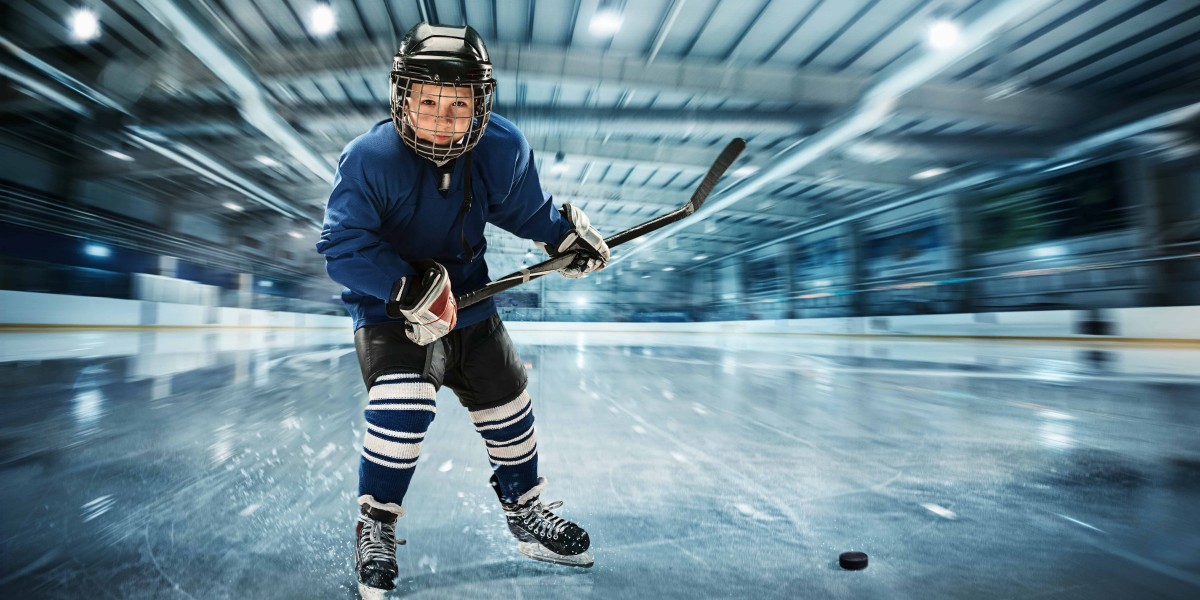However, the thrill of the game comes with inherent risks, making the right hockey protective equipment essential for ensuring player safety. This article explores the various types of protective gear, with a particular focus on youth hockey equipment, to help parents and young athletes understand what is necessary for a safe and enjoyable hockey experience.
Understanding the Importance of Hockey Protective Equipment
Hockey is known for its speed, intensity, and physicality. Players are constantly in motion, skating, checking, and shooting the puck, which can lead to potential injuries. Therefore, hockey protective equipment is not just an accessory; it is a crucial component of the sport. Properly fitted gear helps minimize the risk of injuries, such as concussions, fractures, and cuts, allowing players to focus on their performance rather than worrying about their safety.
Key Types of Hockey Protective Equipment
- Helmets
- Purpose: The helmet is arguably the most vital piece of hockey protective equipment. It protects the head from impacts during falls or collisions with other players or the boards.
- Features: Modern hockey helmets are equipped with advanced safety features, including foam padding and a hard outer shell. Many helmets also come with a face cage or visor to protect the face from pucks and sticks.
- Shoulder Pads
- Purpose: Shoulder pads protect the upper body, including the shoulders, chest, and back, from impacts during checks and falls.
- Features: These pads are designed to provide maximum mobility while ensuring adequate protection. They should fit snugly and allow for full range of motion in the arms.
- Elbow Pads
- Purpose: Elbow pads guard the elbows and forearms, which are vulnerable to injury during falls or contact with other players.
- Features: A good pair of elbow pads will be lightweight, allowing for quick arm movement while offering sufficient cushioning to absorb impacts.
- Gloves
- Purpose: Hockey gloves protect the hands and wrists from slashes, impacts, and abrasions.
- Features: Gloves should allow for dexterity, enabling players to grip their sticks effectively while providing padding on the backhand and fingers.
- Shin Guards
- Purpose: Shin guards protect the shins and knees from pucks, sticks, and impacts.
- Features: Properly fitting shin guards should cover the entire shin and fit snugly without slipping during play.
- Goalie Equipment
- Purpose: Goalies have unique protective needs due to their position on the ice. Their equipment is designed to withstand high-speed shots and impacts.
- Features: Goalie gear includes a specialized helmet, chest protector, leg pads, blocker, and glove. Each piece is designed to maximize protection while allowing for agility.
The Role of Youth Hockey Equipment
As the popularity of hockey continues to grow, more young players are taking to the ice. This rise in youth participation underscores the need for appropriate youth hockey equipment. Children are still developing, both physically and mentally, making it even more critical to ensure they are adequately protected.
Selecting Youth Hockey Equipment
- Proper Fit
- Ensuring that youth hockey equipment fits properly is crucial. Gear that is too large can shift during play, leaving areas exposed to injury, while gear that is too small may restrict movement. Always refer to sizing charts and consider having children try on equipment before purchase.
- Lightweight Materials
- Youth players often benefit from lighter equipment that allows them to skate freely and maneuver easily. Manufacturers are increasingly using advanced materials to create protective gear that offers excellent protection without weighing young players down.
- Adjustability
- Many youth hockey equipment items come with adjustable straps or removable padding. This feature allows the gear to grow with the child, accommodating their development and ensuring longevity of the investment.
- Comfort and Breathability
- Youth players are more likely to enjoy the game if their equipment is comfortable. Look for gear that features moisture-wicking fabrics and adequate ventilation to help keep young athletes cool and dry during games and practices.
Essential Youth Hockey Equipment Checklist
To ensure young players are fully equipped for the game, here’s a checklist of essential youth hockey equipment:
- Helmet with Face Cage/Visor
- Shoulder Pads
- Elbow Pads
- Hockey Gloves
- Shin Guards
- Hockey Skates
- Hockey Stick
- Neck Guard (optional but recommended for added protection)
- Mouthguard (highly recommended for dental protection)
Investing in Quality Equipment
While it can be tempting to purchase the least expensive equipment, investing in high-quality hockey protective equipment is essential. Quality gear provides better protection and often lasts longer than cheaper alternatives. Parents should consider purchasing equipment from reputable manufacturers known for their commitment to safety and performance.
The Role of Coaches and Associations
Coaches and hockey associations play a crucial role in ensuring that players are equipped with the necessary hockey protective equipment. They should provide guidance on the proper fitting and maintenance of gear, as well as educate young players about the importance of wearing their equipment at all times during practices and games.
- Training on Equipment Usage
- Coaches can lead discussions on the significance of each piece of protective gear, reinforcing why players need to wear it properly and consistently. This education can help instill a culture of safety within the team.
- Equipment Checks
- Regular equipment checks by coaches can ensure that players are using their gear appropriately and that it remains in good condition. This proactive approach can help prevent injuries and promote player safety.
The Impact of Proper Equipment on Performance
Proper hockey protective equipment not only enhances safety but can also improve performance. When players feel secure in their gear, they are more likely to focus on their skills and strategies rather than worrying about potential injuries.
- Confidence on the Ice
- Players equipped with the right protective gear tend to play with more confidence, knowing that they are shielded from the risks associated with the game. This confidence can lead to improved performance and a more enjoyable experience.
- Skill Development
- When young athletes are comfortable in their equipment, they can concentrate on developing their skills rather than adjusting ill-fitting gear. This focus can accelerate their growth as hockey players and foster a deeper love for the game.
The Evolution of Hockey Protective Equipment
Hockey protective equipment has evolved significantly over the years. Manufacturers continuously work on innovations to enhance player safety, comfort, and performance. Key trends in equipment development include:
- Advanced Materials
- Modern protective gear is often made from advanced materials that provide superior protection while remaining lightweight and breathable. Innovations like moisture-wicking fabrics and impact-absorbing foams have revolutionized the way equipment is designed.
- Custom Fit Options
- Some manufacturers now offer customizable equipment that allows players to tailor their gear to their specific needs. Custom fit options can enhance comfort and protection, ensuring that players feel secure and confident on the ice.
- Focus on Safety Standards
- With increased awareness of the risks associated with hockey, manufacturers are placing greater emphasis on safety standards. Certifications from organizations like the Hockey Equipment Certification Council (HECC) ensure that gear meets rigorous safety criteria.
Conclusion
The significance of hockey protective equipment and youth hockey equipment cannot be overstated. Ensuring that young players are adequately protected allows them to focus on enjoying the game and developing their skills without the looming threat of injury.
As the sport continues to grow, the commitment to player safety must remain a top priority. By investing in quality equipment, educating players about its importance, and supporting initiatives that promote safe play, we can foster a healthier hockey culture that prioritizes the well-being of its athletes.
Whether you are a seasoned player, a coach, or a parent, understanding the importance of protective gear is essential. Together, we can ensure that hockey remains a fun, exciting, and safe sport for players of all ages. With the right equipment and support, young athletes can experience the joy of hockey while feeling secure on the ice.







